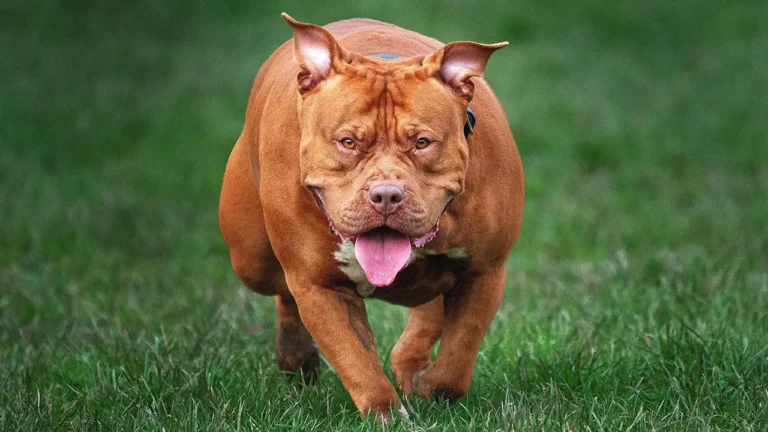Introduction
The XL Bully is a breed that’s been capturing hearts and attention for its impressive stature and engaging personality. If you’re considering adding one to your family or just curious about this fascinating breed, you’re in the right place. Let’s dive into what makes the XL Bully a unique and popular choice among dog lovers.
The Origin of the XL Bully
Historical Background
The XL Bully is a relatively modern breed, developed from the American Bully. It was bred to create a larger, more muscular version of the American Bully, maintaining the breed’s characteristic friendly demeanor and strong build.
read more https://bignewstoday.co.uk/
Breeding and Development
Breeders aimed to enhance the physical attributes of the American Bully while preserving its loyal and affectionate nature. This involved careful selection of breeding pairs to ensure the XL Bully’s size and temperament.
Physical Characteristics
Size and Build
As the name suggests, the XL Bully is a larger variant of the American Bully. It typically weighs between 70 to 120 pounds and stands about 20 to 23 inches tall at the shoulder. The breed is known for its muscular build and robust frame.
Appearance and Coat
The XL Bully has a distinctive appearance, characterized by a broad chest, muscular legs, and a powerful neck. Their coat can come in a variety of colors, including black, blue, brindle, and more. Despite their tough exterior, they are surprisingly gentle and affectionate.
Temperament and Behavior
Personality Traits
One of the XL Bully’s most appealing traits is its friendly and outgoing nature. They are known for being loyal, loving, and good with children. This breed thrives on human interaction and is often described as a “gentle giant.”
Training and Socialization
Proper training and socialization are crucial for the XL Bully. They are intelligent and eager to please, which makes training relatively straightforward. Early socialization helps them develop into well-rounded dogs, comfortable around other pets and people.
Health and Care
Common Health Issues
Like all breeds, the XL Bully is prone to certain health issues. Common problems include hip dysplasia, skin allergies, and certain heart conditions. Regular veterinary check-ups and a healthy diet are essential for maintaining their well-being.
Grooming and Maintenance
The XL Bully’s short coat requires minimal grooming. Regular brushing helps to remove loose hairs and keep their coat shiny. They also need routine dental care and nail trimming to ensure overall health.
Living with an XL Bully
Home Environment Suitability
The XL Bully is adaptable to various living environments, but they do best in homes where they have space to move around. They enjoy being part of the family and do well in both houses with yards and apartments, provided they get enough exercise.
Interaction with Family and Other Pets
This breed is known for its friendly nature and typically gets along well with children and other pets. Proper introduction and supervision are important to ensure harmonious relationships.
Training and Exercise Needs
Training Tips and Techniques
Training an XL Bully can be a rewarding experience. Positive reinforcement methods work best, as this breed responds well to praise and rewards. Consistent, patient training will help them develop good manners and obedience.
Recommended Exercise Routines
The XL Bully requires regular exercise to stay healthy and happy. Daily walks, playtime, and mental stimulation are essential. Engaging them in activities like fetch or agility training can keep them physically and mentally stimulated.
Adopting or Purchasing an XL Bully
Finding a Reputable Breeder or Rescue
If you’re interested in adding an XL Bully to your family, it’s important to find a reputable breeder or rescue organization. Look for breeders who are transparent about their practices and who prioritize the health and well-being of their dogs.
What to Look for in a Healthy Puppy
When selecting a puppy, observe their behavior and health. A healthy XL Bully should have clear eyes, a shiny coat, and a playful demeanor. Avoid breeders who don’t provide health clearances or who have questionable practices.
Legal and Ethical Considerations
Regulations and Restrictions
Be aware of any local regulations or restrictions regarding the breed. Some areas have specific laws governing the ownership of certain breeds, including the XL Bully. It’s important to comply with these regulations to ensure responsible ownership.
Ethical Breeding Practices
Support ethical breeding practices by choosing breeders who prioritize the health and welfare of their dogs. Avoid supporting operations that prioritize profit over the well-being of their animals.
Comparison with Other Breeds
XL Bully vs. American Bully
While the XL Bully and American Bully share many similarities, the XL Bully is notably larger. Both breeds are known for their friendly nature, but the XL Bully’s size and muscular build set it apart.
XL Bully vs. Pit Bull
The XL Bully and Pit Bull are often confused due to their similar appearances. However, the XL Bully is a distinct breed with different characteristics and origins. Understanding these differences can help potential owners make an informed choice.
Cultural Impact and Media Representation
Representation in Popular Media
The XL Bully has been featured in various forms of media, often highlighting its impressive appearance and gentle nature. This representation has contributed to its growing popularity and acceptance.
Public Perception and Misconceptions
Despite its friendly nature, the XL Bully sometimes faces misconceptions and negative stereotypes. Education and positive representation are key to changing these perceptions and showcasing the breed’s true character.
Conclusion
The XL Bully is a remarkable breed known for its size, strength, and affectionate nature. Whether you’re considering adopting one or simply interested in learning more, understanding the XL Bully’s characteristics and needs is essential. This breed’s loyal and gentle disposition makes it a wonderful companion and a standout in the world of dogs.
